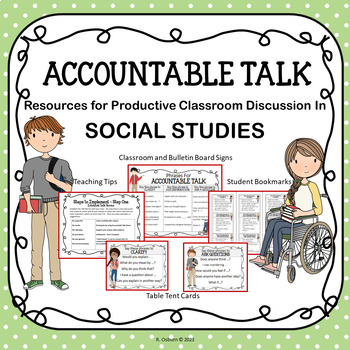Accountable Talk Strategies and Resources for Productive Classroom Discussion
- PPTX
Description
Are you tired of classroom discussions dissolving into chaos, with a few students dominating the discussion while others are silent, or do students show disrespect to others and does the noise level making learning impossible? Do you want the type of classroom discussion that is student led and moves learning forward? In this resource we have tips and resources to help you guide students toward accountable talk, where students are held accountable to state new ideas, agree or disagree respectfully, add information, support answers with evidence, and are encouraged to question to gain understanding.
Step-by-step ideas to achieve this are offered as well as materials for classroom display and student reference. Signs, bulletin board materials, tent card, bookmarks and tally charts to gauge class progress on moving toward discussion to advance and increase learning are provided. Use the resources during:
- Partner talk
- Group discussion
- Whole Class discussion
- Kagan Structure activities
Building on the natural desire students have to talk and be heard, to express themselves and listen to others, you can provide a structure that will engage students!





